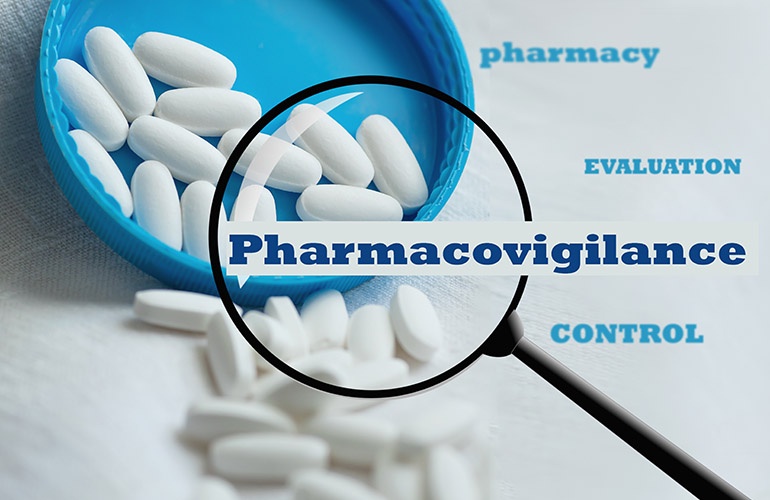Imagine you're sick and your doctor prescribes a new medication. You take it, hoping it will make you feel better. But what if there were unexpected side effects? This is where pharmacovigilance (PV) steps in, acting as a guardian angel in the world of medicine.
What is Pharmacovigilance?
Think of pharmacovigilance (PV) as the science of keeping an eye on medications after they've been approved for use by the public. It's all about monitoring the safety of these medications and identifying any potential risks or side effects that may not have been discovered during clinical trials.
Why is Pharmacovigilance Important?
Clinical trials, although rigorous, can't always capture all the potential side effects of a medication. Here's why pharmacovigilance is crucial:
- Uncovering Rare Side Effects: Clinical trials typically involve a limited number of participants. Rare side effects that might only affect a small percentage of the population might go unnoticed. Pharmacovigilance helps identify these rare but potentially serious issues.
- Drug Interactions: New medications can interact with existing medications a patient might be taking, leading to unforeseen consequences. Pharmacovigilance helps detect these interactions and ensure safe medication use.
- Long-Term Effects: Clinical trials usually last for a limited period. Pharmacovigilance allows for monitoring the long-term effects of medications, which can be crucial for ensuring patient safety.
- Want to know more about Pharmacovigilance? Click here
How Does Pharmacovigilance Work?
Imagine a vast network of healthcare professionals and patients all contributing to a common goal – ensuring drug safety. Here's how it works:
- Reporting Adverse Drug Reactions (ADRs): Doctors, pharmacists, and even patients can report any negative side effects they experience with a medication. These reports are submitted to national pharmacovigilance centers.
- Data Analysis: Pharmacovigilance professionals analyze this data to identify patterns and trends. They look for any clusters of similar side effects or reactions that might suggest a safety concern with a particular medication.
- Risk Assessment: Based on the analysis, the potential risks associated with the medication are assessed. This helps regulatory bodies like India's Central Drugs Standard Control Organization (CDSCO) make informed decisions about the safety of medications on the market.
- Communication and Action: Pharmacovigilance professionals play a key role in communicating potential drug risks to healthcare professionals and the public. This can involve issuing warnings, updating prescribing information, or even withdrawing a medication from the market if necessary.
The Benefits of Pharmacovigilance
A robust pharmacovigilance system benefits everyone involved:
- Patients: It helps ensure the medications they take are as safe as possible, minimizing the risk of unexpected side effects.
- Healthcare Professionals: It provides them with up-to-date information on potential drug risks, allowing them to make informed decisions about patient care.
- Regulatory Bodies: It helps them make informed decisions about the safety of medications on the market and take necessary actions to protect public health.
- Pharmaceutical Companies: It allows them to identify and address potential safety issues with their medications, ultimately improving the quality and safety of their products.
The Future of Pharmacovigilance
With the ever-evolving landscape of medicine and the increasing focus on personalized medicine, the role of pharmacovigilance is becoming even more important. Here are some exciting possibilities for the future:
- Advanced Data Analytics: Utilizing big data and artificial intelligence can help identify trends and potential safety concerns even faster.
- Patient-Centric Reporting: Empowering patients to more easily report ADRs through user-friendly platforms can provide a more complete picture of medication safety.
- Global Collaboration: Enhanced international collaboration in pharmacovigilance can ensure a more comprehensive understanding of drug safety across different populations.
A Rewarding Career Path
The field of pharmacovigilance offers a challenging and rewarding career path for individuals with a passion for public health and scientific inquiry. If you enjoy working with data, have a keen eye for detail, and are interested in making a real difference in people's lives, then a career in pharmacovigilance might be the perfect fit for you!
Equipping Yourself for a Pharmacovigilance Career
To embark on a career in pharmacovigilance, pursuing relevant coursework is a great first step. Numerous universities and institutes offer certificate programs, diplomas, and even postgraduate degrees in pharmacovigilance. These programs equip you with the necessary knowledge and skills in areas like:
- Pharmacology and Toxicology
- Pharmacovigilance regulations and guidelines
- Data analysis and statistics
- Medical writing and communication
Here is the list of top 10 Pharmacovigilance training institutes in India. Click here
Conclusion
Pharmacovigilance plays a vital role in ensuring the safety of medications used by millions of people around the world. It's a constantly evolving field that requires collaboration between healthcare professionals, patients, and regulatory bodies. By working together, we can create a future where medications are even safer and more effective for everyone.


No comments yet